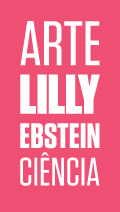The Avian Pathology Department
HOW TO BREED CHICKENS
-
 Lilly Ebstein | Clique para ver +
Lilly Ebstein | Clique para ver + -
 Instituto Biológico | Clique para ver +
Instituto Biológico | Clique para ver + -
 José Reis | Clique para ver +
José Reis | Clique para ver + -
 Ornitopatologia | Clique para ver +
Ornitopatologia | Clique para ver +
The studies carried out in the Avian Pathology Department as of 1931, many of which illustrated by Lilly, contributed to the development of poultry farming in the State of São Paulo.
Intensive poultry farming was a challenge that had not been solved in the State of São Paulo in 1930. The birds died easily due to countless diseases and breeders did not know how to prevent nor cure them. The studies carried out in the Avian Pathology Department as of 1931, many of which illustrated by Lilly, aimed at producing vaccines for diseases such as rabies, avian typhoid, spirochetosis, yaws and sera to fight diseases such as pasteurellosis and cholera. The Department’s work contributed to the economic growth of poultry farming, which had been a marginal activity until then, and helped it take on an industrial scale. A significant fact is the increase in the number of birds from 11.5 million in 1931-33 to 37 million in 1960-61, when the State of São Paulo became the largest poultry producer in the country.
“The Institute was renowned worldwide as a pioneer in this field of study. No other research institute of animal pathology had ever studied so much about bird diseases and never had such a volume of information about poultry farming been systematized, as was done by the small group of three researchers made up of José Reis, Paulo Nóbrega and Anita Swensson”, wrote historian Maria Alice Rosa Ribeiro.
Lilly Ebstein Lowenstein (1897-1966) led a life between science and art, drawing and taking photographs in the fields of Medicine and Zoology. In her work, Lilly combined her technical knowledge of photography and drawing, the study of the sciences and a remarkable talent for aesthetics. She was born in Germany and studied at the Lette-Verein School in Berlin from 1911 to 1914. In 1925, she immigrated with her husband and two children to São Paulo. In 1926, she became an illustrator and photomicrographer at the Illustration and Photography Department at the School of Medicine (USP, as of 1934), which she headed for thirty years after 1932. Lilly collaborated at Instituto Biológico de Defesa Agrícola e Animal (the Biological Institute for the Defense of Agriculture and Animals), from 1930 to 1935, namely in the Avian Pathology Department. A life with art dedicated to the research and dissemination of science.

